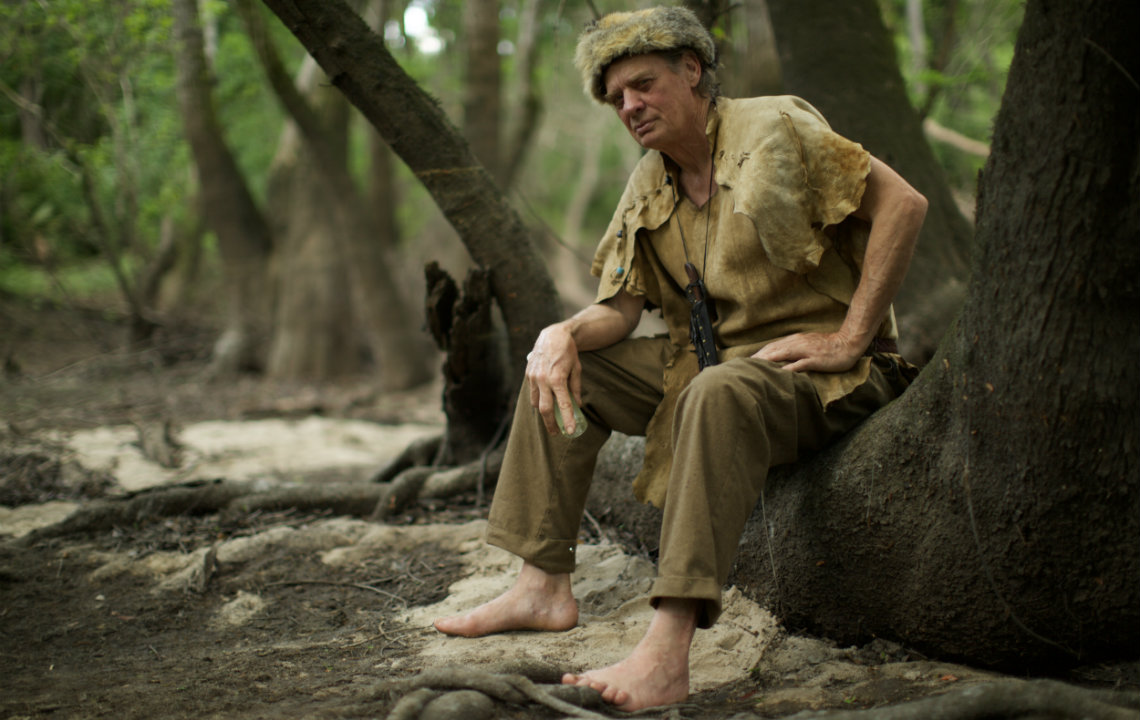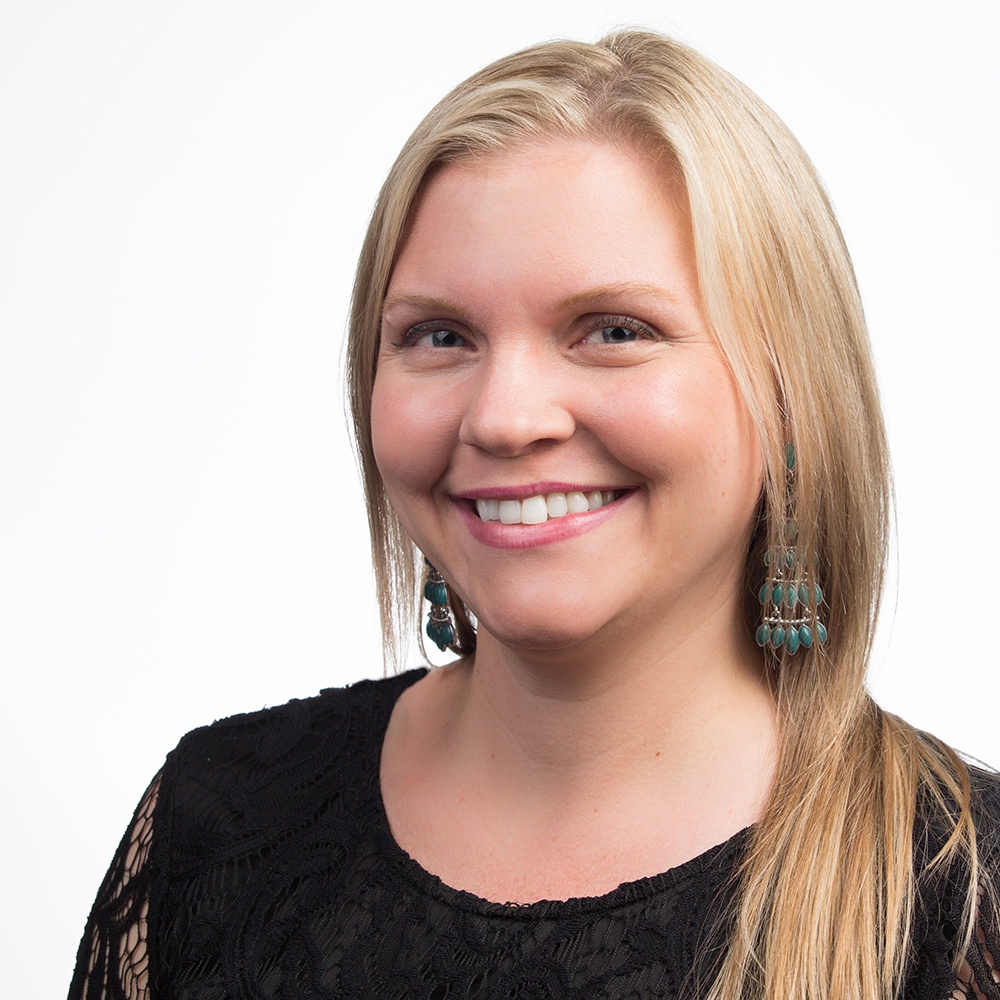MOULTRIE, Georgia--If you love a good “fish story,” ask Colbert Sturgeon about the time he caught a fish with his face.
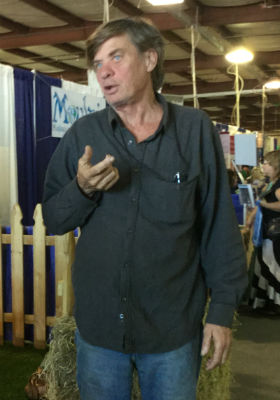 “I can take a branch off a tree, add a hook, and catch a fish without bait. I can catch fish with my fingers. I have even done it with my mouth - just sucked the fish right out of the water,” said Colbert, one of six “primitives” featured in the National Geographic reality show "Live Free or Die," during our recent interview with him. The survivalist gave up life as a financial adviser more than 20 years ago to take to the woods and live off the land.
“I can take a branch off a tree, add a hook, and catch a fish without bait. I can catch fish with my fingers. I have even done it with my mouth - just sucked the fish right out of the water,” said Colbert, one of six “primitives” featured in the National Geographic reality show "Live Free or Die," during our recent interview with him. The survivalist gave up life as a financial adviser more than 20 years ago to take to the woods and live off the land.
“Now, I’m not saying it was a big fish,” Colbert continued, “but you take these guys who compete in bass fishing tournaments away from their gear and see how well they can fish.”
Colbert, who lives in the swamplands of Georgia, is famous for his opinions, his funny sayings, and his encyclopedic knowledge of survival skills. He has almost no need for the outside world, living without running water or electricity and hunting and foraging for food. He owns a truck for the occasional run in to town, but has to canoe for miles to reach where he keeps it parked.
On the show, Colbert offers clever, little-known survival tips and advice as a cameraman follows him through everyday tasks like checking animal traps, harvesting a pelt from a beaver and roasting an otter for dinner. He makes his own mosquito repellent. He demonstrates how to clean using charcoal. He even cuddles a baby raccoon, lulling it to sleep while he explains how to help the baby return to the wild when it's ready.
“It’s beautiful and brilliant because I have no script, no agenda. We rarely do retakes unless the cameraman has to change his lens,” said Colbert, who was approached by National Geographic to do the show. Designed for the increasing number of people interested in survivalism, "Live Free or Die," currently in its second season, follows Colbert and five other individuals who left modern life behind to survive on “what they can produce with their own two hands and sharp intuition.”
We met Colbert by chance when he walked up to the Rethink:Rural booth at the Sunbelt Ag Expo in Moultrie, Georgia, when he stopped by to talk about rural land.
While he didn’t buy any land that day, he did strike up a great conversation, sitting down in one of our rocking chairs to talk about life. He rattled off facts and witty remarks, barely taking a breath, just as he does on the show. Unlike his appearance on television, when he is most often wearing a fur hat, animal skins he has rendered himself, and layers of mud, at the expo he was clean shaven, wearing jeans with a button-down shirt and nice leather shoes. The only sign that he lives in the woods was his woodsy smell and the dirt under his fingernails.
Feeling like a teenager
Colbert said his decision to live in the swamplands has changed him inside and out.
“After doing this for 20 years, there are things I can eat that would make you sick, just like you can’t eat everything your dog could eat,” he said.
But that’s not to say his diet isn’t healthy. In fact, our health writer explains at this link that wild game is one of the healthiest sources of good fat in the world. Colbert, who looks like he’s in his 50s, is actually nearing his 70s. In a recent doctor appointment, he said his medical tests showed results more typical of a man 25 years younger.
“I feel like a teenager all the time. I’m unbelievably happy,” he said.
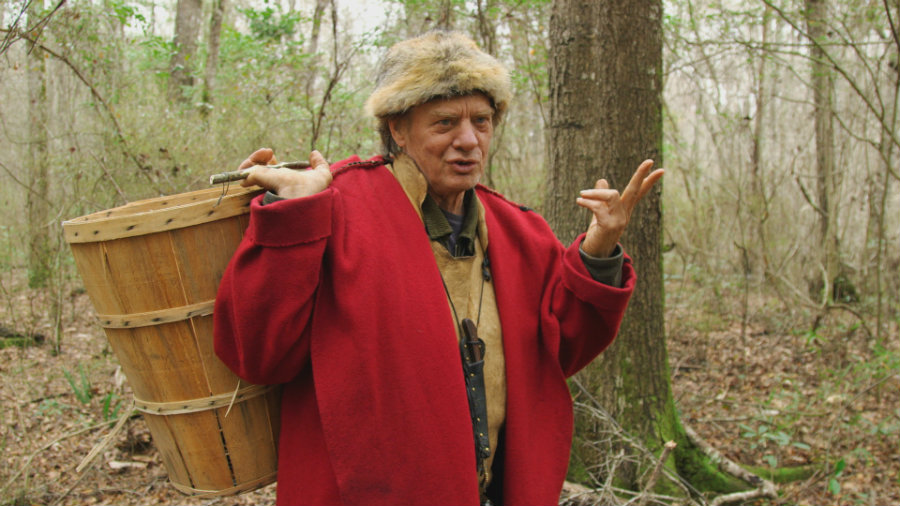
One of his greatest joys is feeling accepted by the wild animals he shares the land with. Colbert recalled one specific experience when he and a raccoon were both walking through the woods. They heard a person coming, and both he and the raccoon instinctively climbed into trees to hide while the “outsider” passed. Once the person had gone, both came out of their hiding spots.
“We both just looked at each other and then went on our way. The raccoon was afraid of the human, but had accepted me,” Colbert said.
He has had similar experiences with other animals, communicating with deer, squirrels, rabbits, possums and other wildlife the way one would communicate with a pet.
Far from a hermit
On the show, Colbert holds back very little, telling his own back story candidly, discussing the tougher aspects of living in the wild, and never showing an ounce of shyness. One episode shows him taking a bath in his homemade outdoor tub. Another shows him wearing next to nothing in the summer heat.
But there is one detail he holds back: the exact location of his land. Although he said he considers all his fans to be “friends I haven’t met yet,” he doesn’t want all of them showing up in his sacred space.
If there was any doubt that could happen, it was cleared up when a fan walked up to Colbert, interrupting our interview, to ask if he could come stay on his land for a while.
“Sure, we can meet up sometime,” Colbert said kindly, taking the man’s phone number. But later, he said, “If everyone showed up at my house, it wouldn’t be the same place anymore.”
Colbert is far from a hermit, though. He has a folksy, friendly personality and said he regularly travels into town to “harass people.” Family members including his four grandchildren see him regularly. And, from time to time, Colbert does invite guests to stay with him. A financial planner he mentored visited him on his land, and his nephew - a 14-year-old who had run into some trouble - moved in for a while.
How to "rewild" Yourself
While Colbert’s nephew had a “crash course” in living in the wild, it’s not the route Colbert would recommend to someone who’s looking to permanently go off the grid and live naturally. The right way to “rewild” yourself is to move gradually into the primitive lifestyle, after thoroughly educating yourself about surviving off the land, he said.
“I don’t recommend it unless you have the knowledge, the skills, the talent, the determination and an aptitude for creativity to solve problems.”
Colbert said humans are becoming like “lap dogs” that couldn’t survive in the wild the way a coyote could.
“People have become domesticated, and becoming undomesticated is very difficult,” he said.
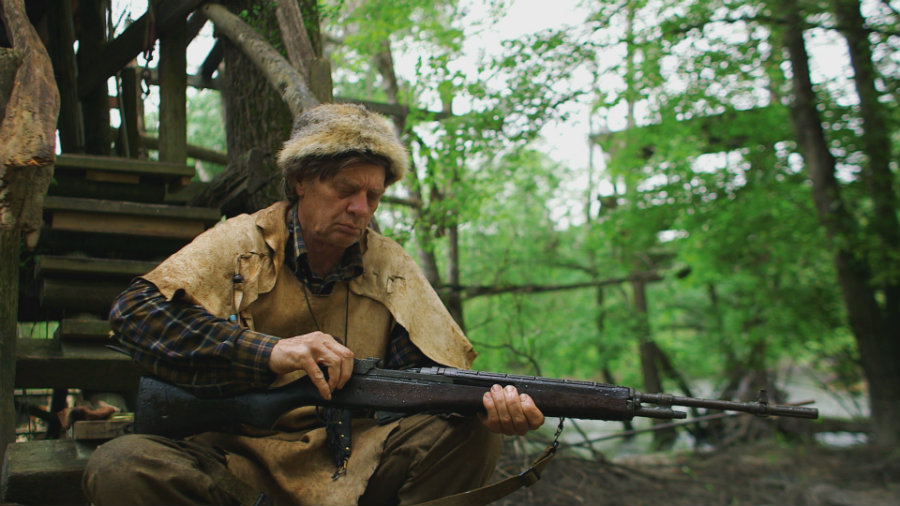
So where would someone even start?
Colbert shared these tips:
-
Read, read and read some more. “I’ve been to many, many libraries. Read all you can about nature skills, wood skills, survival skills, hunting and fishing. Start with an early 1900s Boy Scouts manual.”
-
Learn about edible plants by reading edible plants books or even doing field work with a botanist. “I can identify more than 100,000 plants. And if I don’t know the plant, I know the evidence” to look for to determine whether it’s edible.
-
Join hunting and fishing clubs to sharpen your hunting and fishing skills.
Colbert said he started his own survivalism education in childhood, pretending he was a “frontier man” on his family’s farm. When he decided to move into the woods permanently, he attended survival workshops. But his greatest resource (apart from real life experience) was books.
Trouble in the swamplands
Nevertheless, even Colbert makes mistakes.
He spent much of his 20 years in the woods building a cabin out of cypress and pine wood he found floating in the river. But his home tragically caught fire and burnt down while he was out checking animal traps. He was with a National Geographic crew when he found the ruins of his home. The show didn’t explain the cause of the fire, though earlier in the episode he was shown lighting his woodstove.
When Colbert’s cabin burned down, many of his fans were devastated for him and even mailed new tools and supplies for him to a friend of his. Decades of work was lost in an instant. But Colbert - in classic Colbert fashion - turned it into a positive, saying now he could make a new home with new features he had wished his previous home had. Later episodes of "Live Free or Die show Colbert teaching his teen-aged grandchildren how to use a pulley system to move a 400 lb. utility pole into place as they help build his new house. Fans praised his upbeat attitude and determination.
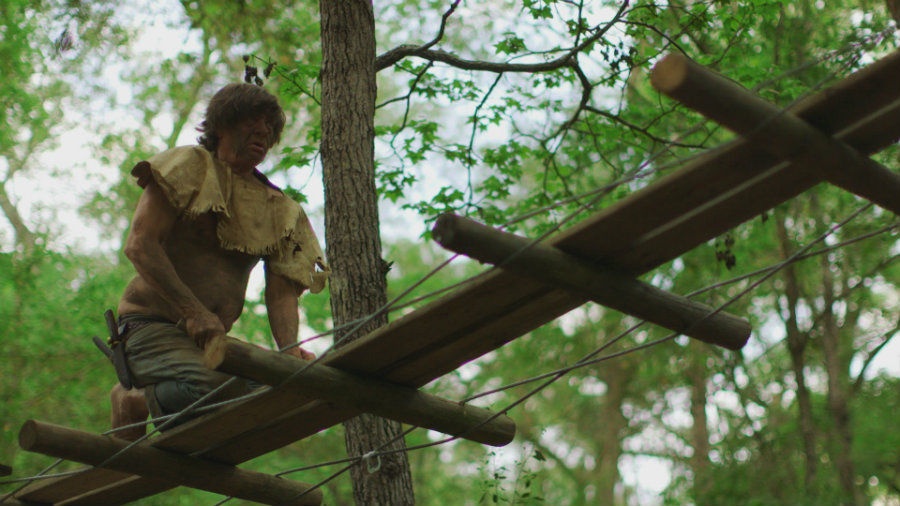
Colbert is not without his critics though.
One man wrote on the "Live Free or Die" Facebook page, pointing out the store stickers on some of the lumber Colbert used when he started to build his new house - as if anything purchased somehow makes the rustic cabin less authentic, never mind that he had to undergo great lengths to get the supplies to his remote home. Another man speculated that Colbert only moved to the woods to escape reality - and alimony - after going through a divorce and losing his money.
But Colbert is an open book even when it comes to this part of his past. He, himself, reveals on one episode that he moved to the woods after he went bankrupt and divorced his wife. In our interview, he added:
“I made lots of money for myself and for other people. I had a big house. But it came to a point when I asked myself, ‘What’s the meaning of life?’ The answer was to have food, water, shelter, friends and something fun to do. Everything else leads to stress.”
He couldn’t come up with an answer when asked if he misses anything about his “old life.”
“I go into town, and I’m just amazed at how stressed people are. The world has a lot of problems because it’s based on greed, taking rather than giving, and trying to own rather than respect and share. Even if I won the lottery, I wouldn’t want electricity.”
Not changed by fame
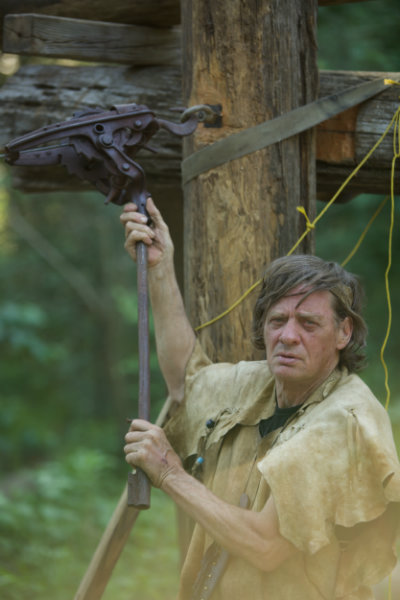 Some would say his role on the reality show is the equivalent of winning the lottery. Before the show began, Colbert survived on $2,000 a year, which covered the taxes on his land and costs related to keeping his old truck running. Now, National Geographic cuts him checks for participating in the show. But Colbert said that hasn’t changed anything.
Some would say his role on the reality show is the equivalent of winning the lottery. Before the show began, Colbert survived on $2,000 a year, which covered the taxes on his land and costs related to keeping his old truck running. Now, National Geographic cuts him checks for participating in the show. But Colbert said that hasn’t changed anything.
“I still have the same dents in my truck, I still don’t wash it. The last two checks they sent me are still sitting in my checkbook,” he said. “I may use it to buy land one day.”
If you ask Colbert how much land he already “owns,” he won’t give a simple answer. He said “owning” land is a man-made concept, and that he could say he owned any piece of land he was standing on - or that he didn’t own any land at all, but rather made use of it. After that explanation, he conceded that he pays taxes on a property that spans about a half mile by a quarter of a mile. That equates to about 80 acres.
Colbert added that he has permission to use “several thousand” additional acres because he’s such a good neighbor. He treats the land - and all that is on it - with care.
“I believe there’s a creation and there’s a Creator, and we need to respect them both.”
A mission to teach
Colbert naturally takes the role of a teacher in conversations and on the show. Over the years, he also has taught a number of survival classes, though the experience can be a little difficult.
“I have so much to teach, but people aren’t ready. It’s like trying to teach economics to a class of kindergartners,” he said.
He recalled one class in which he asked his students to take a few minutes to observe the wooded area they were sitting in and tell him what they noticed. The answers included: nothing, a leaf, a tree. Once his students had answered, Colbert spent the next half hour revealing all the activity that had been going on in that very patch of woods over the past month. For example, he pointed out where a fox had walked and then had laid down to sleep for a night.
“I don’t want everyone to go live in the woods. If they tried, many of them would die. But I want to entertain, educate and teach people simple living skills,” Colbert said. “There are many other ways to live off the grid: homesteading, farming. Each person has to find a niche for himself where he is as free as possible.”
It is a message he shares often on the show. In the season 1 finale, he said this:
"Everything in nature has found a niche, a perfect harmony, a balance. Man needs to find his niche, his perfect balance, where he fits in the natural cycle."
As for Colbert? He seems to have found his spot, and he couldn't be happier.
"I feel like a little kid in the Garden of Eden, just playing in the woods every day," he said.
Colbert Quotes:
Colbert told us his fans love his quirky sayings. These are a few favorites:
-
Some people should never get off the sidewalk because - bless their hearts - they’ll get themselves hurt.
-
If it ain’t working, try something else. If it still doesn’t work, ask yourself, “What would a smart person do?”
-
If you ain’t got it, don’t use it.
-
If you can’t pick it up, don’t try to throw it.
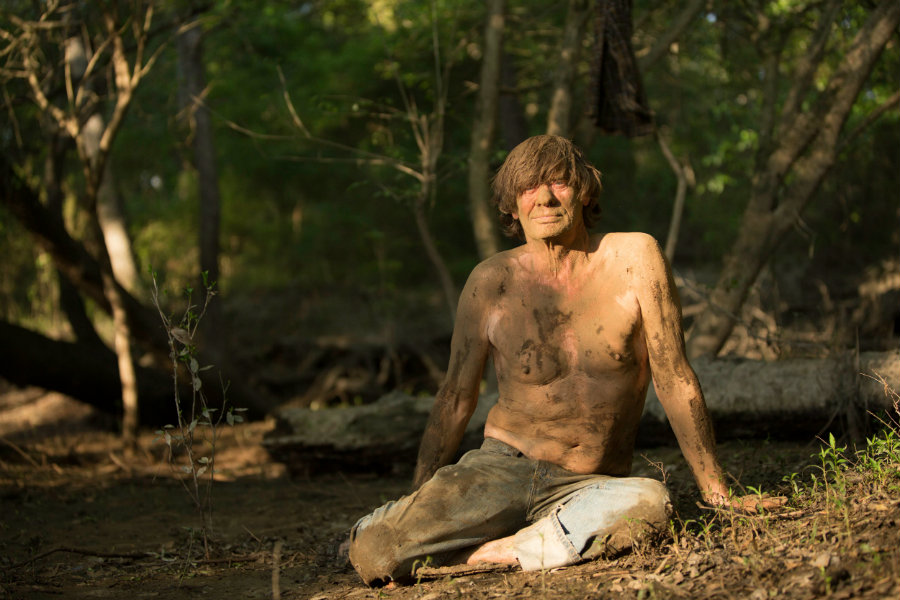
Colbert sitting on the ground, caked in mud. (Photo Credit: NG Studios/James Peterson)
To find out more about "Live Free or Die," visit the show's website at channel.nationalgeographic.com/live-free-or-die. To look for rural land of your own, take a look at acreage available for sale throughout the South at RaydientPlaces.com.
Top image: Colbert sitting on tree root. (Photo Credit: NG Studios/James Peterson). Second from bottom image: Colbert building a suspension bridge.
(Photo Credit: NG Studios/James Peterson)


